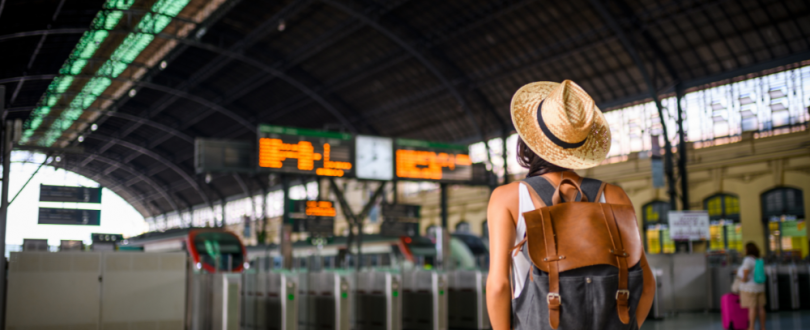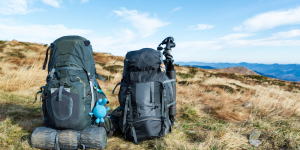
Travel Packing Made Easy: Expert Tips for Efficient and Smart Packing.
Efficient packing starts with a clear understanding of your travel essentials. Key considerations include:
Destination Analysis: Research your destination’s climate, cultural norms, and activities to pack appropriately.
Duration of Stay: Determine the quantity of items needed based on how long you’ll be away.
Purpose of Travel: Differentiate between a business trip, leisure vacation, or adventure travel, as each requires specific items.
Creating a checklist tailored to these factors ensures you pack everything necessary without overloading your luggage.
The Art of Minimalist Packing
Minimalist packing is not just about taking less; it’s about taking what’s essential. Opt for versatile clothing that can be mixed and matched, creating different outfits with fewer pieces. Focus on multi-purpose gadgets and travel-sized toiletries. Keeping your luggage in a carry-on can save time at airports and reduce the risk of lost baggage.
Organizational Strategies for Packing
A well-organized suitcase can save you time and stress. Implement these strategies:
1. Packing Cubes: Use them to categorize items (e.g., tops in one cube, bottoms in another) for easy access.
2. Compression Bags: Ideal for bulky items like jackets or sweaters, they save space by removing air.
3. Compartmentalization: Separate different types of items (electronics, toiletries, documents) into different compartments or bags.
These techniques not only maximize space but also keep your belongings neat and easily retrievable.
Clothing Selection and Packing
Choosing and packing the right clothes is crucial for travel comfort:
– Climate-Appropriate Clothing: Pack clothes suitable for the weather at your destination. Lightweight, breathable fabrics are great for hot climates, while layers work well for colder regions.
– Cultural Consideration: Be aware of the local culture and dress codes, especially when visiting religious sites or conservative areas.
– Packing Method: Roll your clothes to save space and reduce wrinkles, or use the bundling method for more organized packing.
– Footwear: Choose versatile footwear appropriate for various activities; typically, one casual pair and one formal or activity-specific pair.
Managing Security and Immigration Requirements
Navigating through security and immigration smoothly is crucial for stress-free travel. Here’s how to pack with these checkpoints in mind:
1. Documentation Organization: Keep your passport, visa, travel insurance, and other essential documents in an easily accessible yet secure compartment of your carry-on.
2. Adhering to Restrictions: Familiarize yourself with TSA guidelines, particularly regarding liquids and electronics. Pack liquids in a clear, quart-sized bag and ensure your electronics are easily removable for screening.
3. Customs Compliance: Be aware of items that are prohibited or require a declaration in your destination country to avoid delays or confiscation at customs.
Efficient packing not only eases your journey through security but also ensures compliance with immigration and customs regulations.

Packing for Different Types of Travel
Your packing strategy should vary depending on the type of trip:
1. Business Travel: Prioritize formal wear, essential work documents, and tech gadgets. Consider a garment bag for suits or dresses to keep them wrinkle-free.
2. Leisure Vacation: Focus on casual wear, comfortable shoes, and leisure items like books or a camera.
3. Adventure Travel: Pack specialized gear based on activities planned (e.g., hiking boots, swimwear, thermal wear) and a durable, waterproof backpack.
4. Long-term Travel: Include a broader range of clothing to accommodate different climates and occasions, as well as additional personal care items.
Tailoring your packing list to the travel type ensures you have all the essentials for your specific journey.
Technology and Gadgets
In the digital age, packing the right technology is crucial. Bring universal adapters, portable chargers, and necessary cables. Ensure your gadgets are packed securely and are easily accessible for security screenings.
Health and Safety Items
Prioritizing your health and safety while traveling is essential:
Basic First-Aid Kit: Include band-aids, antiseptic wipes, pain relievers, and any personal medications.
Travel Vaccinations and Medications: Depending on your destination, you may need specific vaccinations or preventative medications, like malaria pills.
Health Insurance Documentation: Carry documentation of your travel health insurance and understand what it covers.
Safety Items: Small safety items like a flashlight, a whistle, or a door stop can provide added security in unfamiliar environments.
Sustainable Packing Practices
Consider the environment when packing. Use reusable bottles, and eco-friendly toiletry containers, and avoid single-use plastics. Choosing sustainable products not only benefits the environment but often leads to more durable and long-lasting travel gear.
Last-Minute Checks and Travel Preparation
Before leaving, do a final review of your packing list. Check the weight of your luggage to adhere to airline restrictions and confirm you have all necessary documents and items for your trip. Preparing ahead ensures a stress-free start to your journey.
By following these guidelines, travelers can pack efficiently, ensuring they have everything needed for their journey without the burden of excess luggage. Smart packing contributes to a more enjoyable and hassle-free travel experience.

